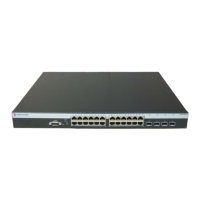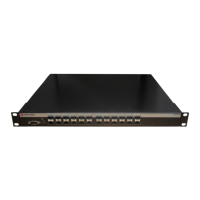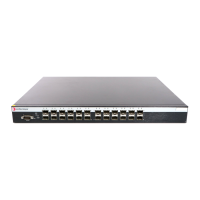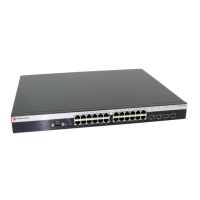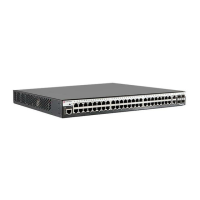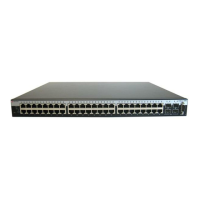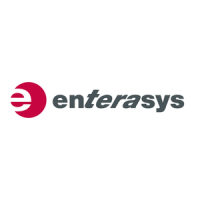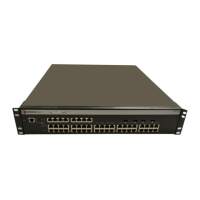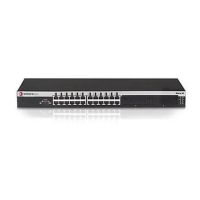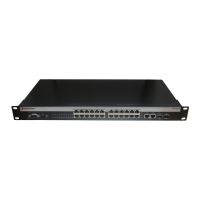Spanning Tree Basics
Fixed Switch Configuration Guide 15-9
Spanning Tree Basics
This section provides you with a more detailed understanding of how the Spanning Tree operates
in a typical network environment.
Spanning Tree Bridge Protocol Data Units
The most elemental task of a Spanning Tree Bridge is to control the forwarding state of each port.
The bridge evaluates the information received from its immediate neighbors in the form of
BPDUs, along with its own configured information. From this information a root is elected and
then port roles may be selected for each port. For the root port and designated ports the desired
state is forwarding. These ports will become forwarding by subsequent exchange of BPDUs or
through the expiration of protocol timers according to the state machines defined by the Spanning
Tree Protocol. The remaining ports will become discarding (shorthand for the states of blocking,
listening, and learning).
To facilitate this process, the bridge transmits BPDUs out each port on a periodic basis as well as in
response to events such as changes in port operational status, configuration changes, timer
expiration, and changes in topology derived from received BPDUs.
Electing the Root Bridge
The network topology is determined by the selection of the root bridge. The topology is based on
each bridge’s best path to root. Root election occurs on each bridge when new information is
received from a neighboring bridge in a BPDU, when link is lost on a port connecting a
neighboring bridge, or when the bridge’s priority is administratively changed.
The root is elected by comparing the root IDs received in BPDUs as well as the bridge’s own
bridge ID. The bridge with the lowest ID is chosen as root. The bridge ID is an 8-byte value with
the 2 most significant bytes being the bridge priority and the 6 least significant bytes being the
bridge MAC address. Root may be forced to a particular bridge by the configuration of bridge
priority. Among bridges with the same bridge priority, the one with the lowest MAC address is
elected root. If a bridge receives no BPDUs indicating a better bridge ID than its own, it becomes
the root bridge.
Assigning Path Costs
Path costs are one factor in determining port roles. Each LAN segment has an operational path
cost associated with it. The cost is based on the port speed, by default. The higher the speed, the
lower the cost. Port costs for link aggregations are based on the aggregate speed of all the
For information about... Refer to page...
Spanning Tree Bridge Protocol Data Units 15-9
Electing the Root Bridge 15-9
Assigning Path Costs 15-9
Paths to Root 15-10
Identifying Designated, Alternate, and Backup Port Roles 15-12
Assigning Port States 15-13
RSTP Operation 15-14
MSTP Operation 15-14
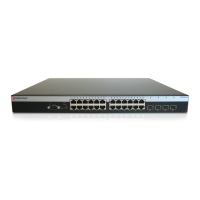
